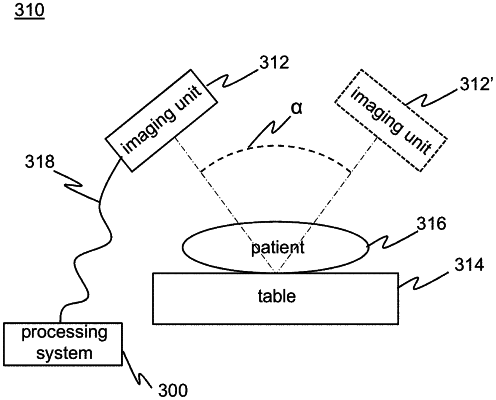| CPC G06T 7/0012 (2013.01) [A61B 5/02416 (2013.01); A61B 5/349 (2021.01); G06T 11/003 (2013.01); G06T 17/00 (2013.01); G06T 19/00 (2013.01); G06T 2200/04 (2013.01); G06T 2207/30048 (2013.01); G06T 2210/41 (2013.01)] | 20 Claims |

|
1. A method of building a 3D model of at least a part of a cardiovascular system of a person, comprising:
receiving a first video stream comprising first frames comprising image data on the cardiovascular system over a first period of time;
receiving a second video stream comprising second frames comprising image data on the cardiovascular system over a second period of time, wherein the first period of time is in disjunction from the second period of time;
obtaining cardiac cycle data related to the cardiovascular system from the first period of time and the second period of time;
selecting at least one of the first frames and at least one of the second frames based on the cardiac cycle data; and
building the 3D model of part of the cardiovascular system using the selected frames,
wherein the cardiac cycle data comprises timing data on a first cycle event within the first period of time and timing data on a second cycle event within the second period of time, and the selecting of the at least one of the first frames is based on the timing data of the first cycle event and the selecting of the at least one of the second frames is based on the timing data of the second cycle event.
|